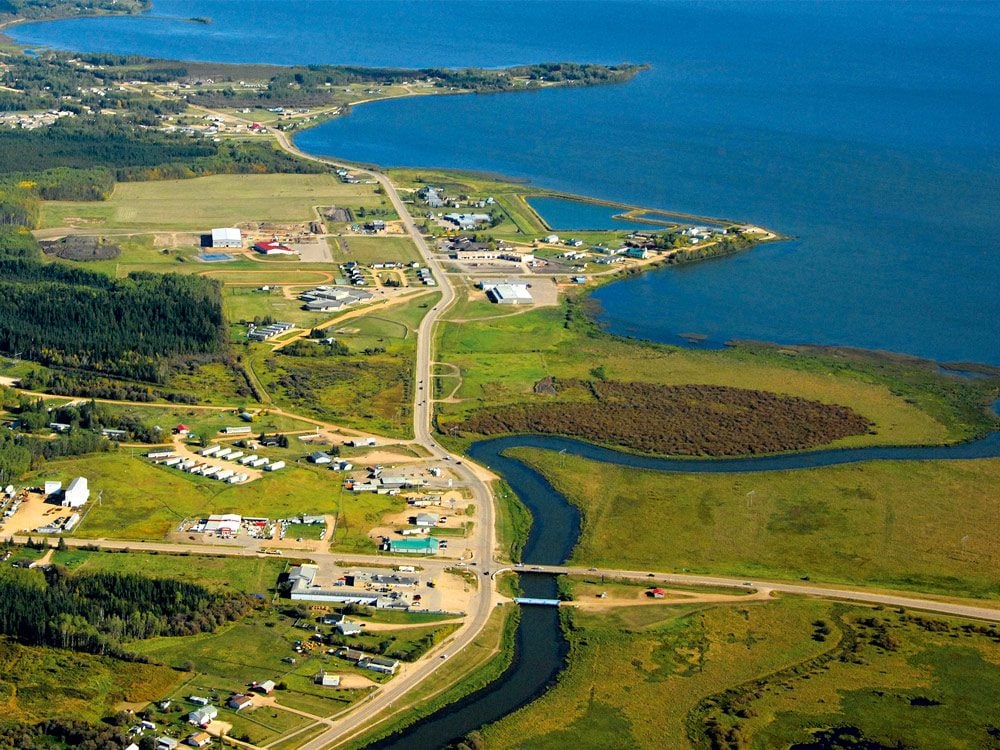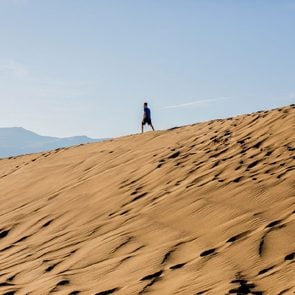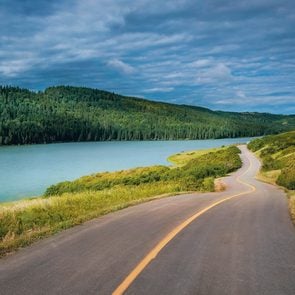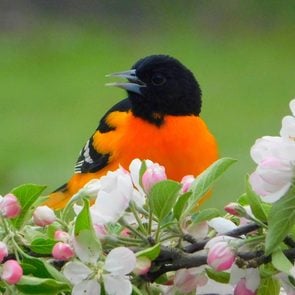A Love Letter to Wabasca
While the small Northern Alberta hamlet is figuring out its future, the birds and animals will always come back to its lakes and rivers.

Wonderful Wabasca
When I visited relatives in Wabasca, Alberta, about 40 years ago, I felt an attraction to the place that just wouldn’t go away. It was a wild place with lakes, a river and an expanse of bush just waiting to be explored. A few years later, during a glorious boreal forest fall, I was back, building a log house on a hectare of land on Blueberry Street. I still live on that land. The gravel road is paved, the dark winter nights are now brightened by streetlights and there is a beautiful new golf course about five minutes away, but I still feel the “wildness” as I travel the trails that lead out of my backyard.
When I moved here with my family, oil production was just getting started in the area. The good times brought many changes. Residential land was developed, and families were able to buy property and set up homes. People who had been forced to leave the community to find work came back and new people arrived from all over the country, and all around the world. Soon, we had a hospital, an aquatic centre, a fieldhouse and an indoor hockey rink. New stores opened to give the old Hudson’s Bay store a bit of competition, and hotels and restaurants came along to house and feed the itinerant workers that the oil patch attracted.
The landscape of the town has changed, and large areas of the bush have been impacted by industry, but the lakes are in the same place and the Wabasca River still flows between them. The main road through town parallels the river on the north side for about a kilometre, and there are about 2,500 hectares of wetlands to the south and west. From spring to fall these wetlands are teeming with birds and animals.
Through the summer, this stretch of river is a busy place. There are usually a few people fishing from the bridge or on the bank, or floating in boats and canoes. There is always some type of “natural” action going on. You might see pelicans, cormorants, ospreys, bald eagles, terns and even mink and otters going after fish. Once, I had a mink jump from the riverbank into my canoe to check out the fish that I’d caught. Muskrats, ducks and, occasionally, beavers harvest the vegetation. Coyotes, foxes and birds of prey patrol the area looking for anything that isn’t paying attention.
The speed of the river is usually enough to keep it from freezing completely in winter, unless it gets really cold. Sometimes, a small group of holes develops and, if the otters are around, they appear and disappear through them so fast that you can’t even tell how many animals there are. Every now and then, an otter will pop up with a fish and then lie on the ice to eat it. If the South Wabasca Lake winter kills some of the fish, the eagles and ospreys have a banquet in spring. Dead fish pile up against the ice where the river flows into the North Wabasca Lake and dozens of these fish-eaters squabble over them for days.
Things are somewhat difficult in the Wabasca area right now with the decline in the oil and gas business. Some people are being forced to leave town to find work elsewhere, others are leaving never to come back. While our town is figuring out its future, the birds and animals will always come back to the river and its bounty. I’m going to stick around on Blueberry Street until it’s my time to go, and I’ll keep an eye on the river and all the entertainment that it provides.
Next, check out 10 unforgettable day trips from Edmonton.






